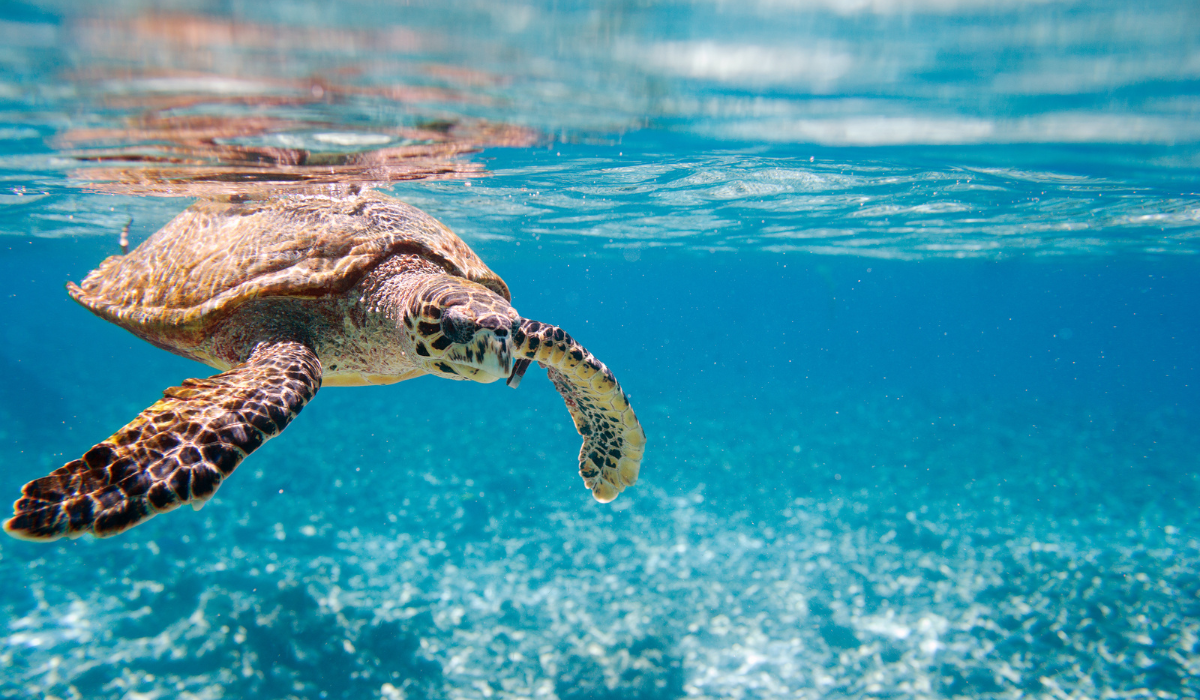Can a Turtle Sleep Underwater

Turtles are fascinating creatures that have been around for millions of years. They are known for their slow movement, hard shells, and their ability to live in water and on land. Many people wonder if turtles can sleep underwater, and if so, how they are able to do so. In this article, we will explore the sleeping habits of turtles, whether they can sleep underwater, and other interesting facts about these amazing creatures.
Can a Turtle Sleep Underwater?
Turtles are aquatic animals that can spend most of their lives in water. However, they also need to breathe air to survive. This raises the question of whether turtles can sleep underwater, as they would need to surface for air. The answer is yes, turtles can sleep underwater, but it is not as simple as it may seem.
Turtles are reptiles and are cold-blooded, which means their body temperature is regulated by the environment they are in. This affects their sleeping habits, as they tend to be less active in cooler temperatures. Turtles also have a unique ability to control their breathing, which allows them to stay underwater for extended periods of time.
How Turtles Breathe
Turtles breathe air through their nostrils, and some species can hold their breath for several hours. When a turtle is submerged underwater, it can slow down its metabolism and heart rate, which allows it to conserve oxygen. This helps the turtle to remain underwater for extended periods of time while sleeping.
Some turtle species, such as the softshell turtle, can even absorb oxygen through their skin while underwater. This allows them to remain submerged for even longer periods of time. However, not all turtle species have this ability, and most turtles will need to surface for air eventually.
How Turtles Sleep Underwater
When a turtle is sleeping underwater, it will usually float to the surface of the water, where it can take a breath of air before sinking back down. While sleeping, turtles will often tuck their head and limbs into their shells, which makes them appear as if they are dead. This is a defense mechanism that helps protect the turtle from predators.
Turtles also have the ability to sleep with one half of their brain at a time. This allows them to remain alert to potential dangers while still getting the rest they need. It is believed that this ability is due to the fact that turtles have been around for so long, and it has helped them to survive in a variety of environments.
How Long Do Turtles Sleep?
The amount of time turtles sleep can vary depending on several factors, such as the species, age, and environmental conditions. Some turtles may sleep for only a few hours a day, while others may sleep for up to 18 hours a day.
Sleeping Position
When it comes to sleeping, turtles have unique habits that are influenced by their anatomy and physiology. One interesting aspect of turtle sleep is their sleeping position.
Unlike humans and other animals that generally sleep lying down or in a curled-up position, turtles have a different approach. When turtles sleep, they often tuck their head and limbs into their shell and rest on the bottom of their aquatic environment. This position helps to protect them from predators and provides them with a sense of security.
Some turtles, such as the green sea turtle, have been observed sleeping in vertical positions near the surface of the water. This allows them to easily surface for air while still maintaining a state of rest.
On land, turtles may sleep in a variety of positions. Some species, like the box turtle, burrow into the ground and rest with their limbs tucked in. Others, like the desert tortoise, may sleep in shallow burrows or simply rest on the ground.
Overall, the sleeping position of a turtle depends on the species, environment, and individual preferences. Despite their unconventional sleeping habits, turtles are able to get the rest they need to maintain their health and well-being.
Environmental Conditions
The environmental conditions that turtles are exposed to can have a significant impact on their sleep habits. Different species of turtles may have unique requirements for optimal sleep, and environmental factors such as temperature, light, and noise can all influence their sleeping patterns.
For aquatic turtles, the temperature and quality of the water can affect their sleep. If the water is too cold, turtles may become less active and less likely to sleep. If the water is too warm, it may cause them to become restless and agitated. Additionally, water quality is important for turtle health and well-being. If the water is polluted or contains harmful chemicals, it can impact their sleep quality and overall health.
Light is another environmental factor that can affect turtle sleep. Some species of turtles, like the red-eared slider, are diurnal and require a certain amount of light to maintain their sleep-wake cycle. In contrast, other species, like the loggerhead sea turtle, are nocturnal and may sleep during the day and be active at night. Exposure to too much light, particularly at night, can disrupt their sleep and impact their behavior.
Conclusion
In conclusion, turtles have unique sleep habits that are influenced by their anatomy, physiology, and environment. While some species are known to sleep for extended periods of time, others may only sleep for short intervals. Turtles also have interesting sleeping positions, often tucking themselves into their shells or resting on the bottom of aquatic environments.
Environmental factors such as temperature, light, and noise can all have an impact on turtle sleep. By providing a suitable habitat that meets their needs, it is possible to promote healthy sleep in turtles and ensure their well-being.
RECENT ARTICLES
